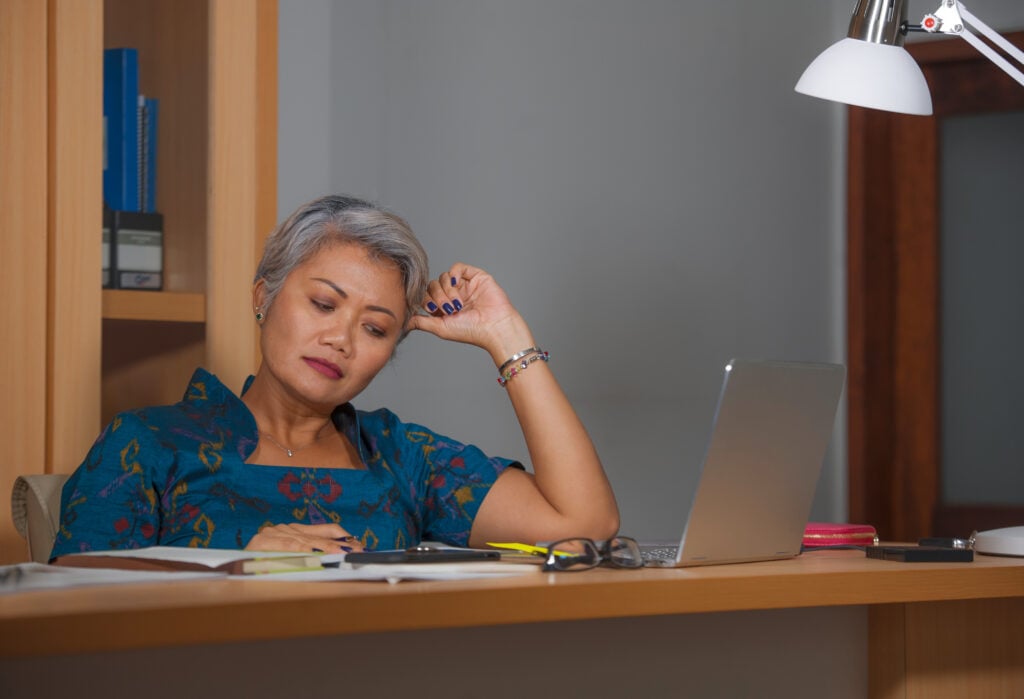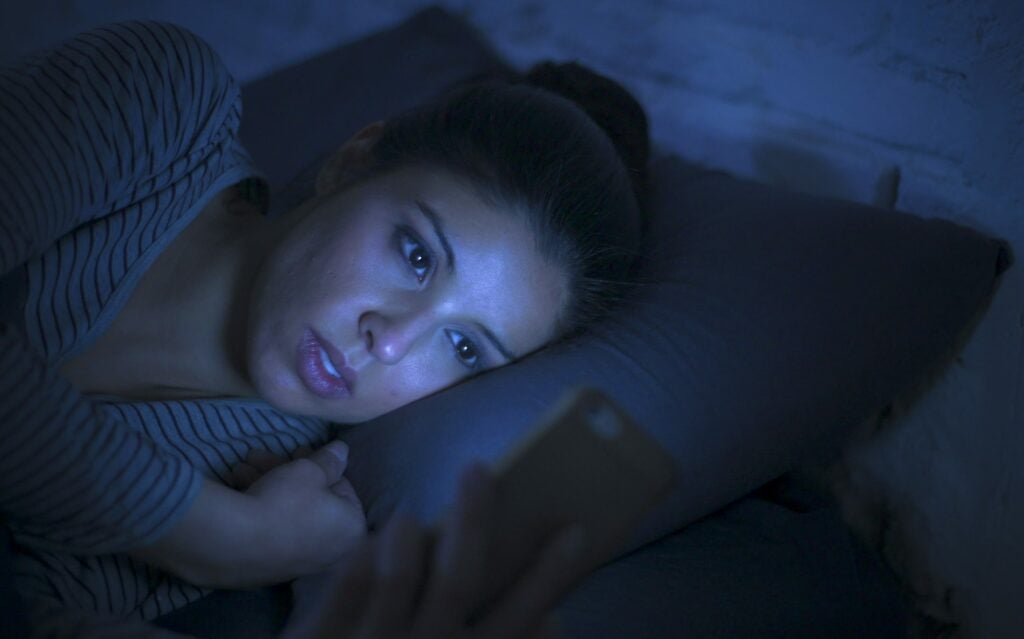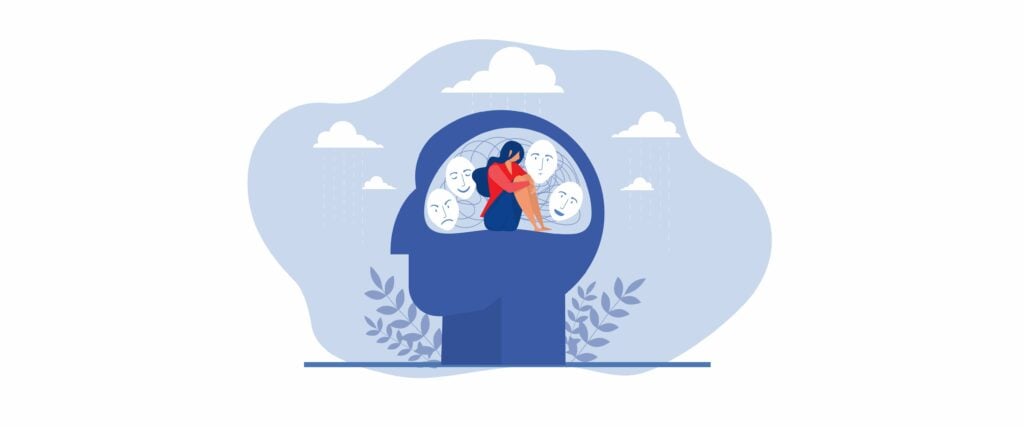Anxiety in children
Reviewed by Susan Radzilowski, MSW, LMSW, ACSW

Anxiety is a state of worry or tension that people experience as a natural response to stress. Though all kids get anxious at times, some have intense, persistent episodes that disrupt their daily lives. When this happens, it may be a sign of an anxiety disorder.


Anxiety can interfere with a child’s home life, friendships, or schoolwork. Anxiety disorders are the most common mental health disorders diagnosed in young people, affecting an estimated 1 in 12 kids and 1 in 4 adolescents.1, 2
What types of anxiety are common in children?
Children can experience different types of anxiety, including:
- Separation anxiety is the worry or fear someone may feel when they’re away from a person they’re attached to, such as a parent. This type of anxiety is common and normal in babies and toddlers. But if intense separation anxiety lasts past early childhood, it may be a sign of a more serious condition called separation anxiety disorder.
- Generalized anxiety disorder (GAD) involves feeling serious anxiety about a wide range of concerns. A child with GAD may worry about the future, school, extracurricular activities, their social life, family issues, or past actions.
- Social anxiety is intense anxiety about interacting with other people.
- Obsessive-compulsive disorder (OCD) involves unwanted, recurring thoughts (obsessions) that lead you to do specific things (compulsions) to try to ease those thoughts. For example, a child might repeatedly count to a specific number because they believe something bad will happen if they don’t.
- Panic disorder may be diagnosed after a child has had at least two panic attacks—periods of sudden, extreme anxiety with physical symptoms like shaking, clammy hands, shortness of breath, and a rapid heartbeat.
- Selective mutism is a type of social anxiety where a child can’t speak in certain social situations, even though they talk freely in others.
- Phobias are extreme fears about specific objects, people, or situations. They may develop after a distressing experience, or a child might learn them from a parent or loved one with the same phobia.
Signs and symptoms
Anxiety may be harder to recognize in kids because it can resemble other mental health conditions, such as depression. In addition, some children prefer to keep their fears and worries private, making symptoms harder to notice.
Some children with anxiety cry frequently, dread school or other events, or have physical symptoms like headaches, stomachaches, or fatigue. Other common signs of childhood anxiety include:
- Aggression
- Irritability, anger, or tantrums
- Clinginess
- Trouble at school
- Appetite changes or digestive problems
- Trouble concentrating
- Sleeping too much or too little
- Social withdrawal
- Restlessness
Why do children get anxiety disorders?
A variety of factors can play a role in why some children develop anxiety disorders:
- Anxiety disorders may have underlying genetic causes.
- Difficulties coping with stress can lead to an anxiety disorder.
- A child may pick up anxious beliefs, thoughts, and behaviors from the people around them.
- Traumatic experiences—like abuse or neglect, a loved one’s death, frequent moves, growing up in poverty, being bullied, or getting seriously ill or injured—can increase a child’s risk.
- Other mental health concerns, such as autism spectrum disorder (ASD) and attention-deficit/hyperactivity disorder (ADHD), can increase risk.
How to help
Childhood anxiety can be treated in a number of ways. Talk therapy is often recommended. Medication may sometimes be prescribed, either alone or in combination with therapy. In all cases, parents, caregivers, and loved ones can help children learn and practice everyday coping techniques.
Therapy
Cognitive behavioral therapy (CBT) is a common, effective treatment for anxiety in children. In CBT, a child shares their thoughts and feelings while the therapist helps them learn what anxiety is, how to recognize its signs, and how to replace negative or flawed thinking patterns with more positive, helpful ones.
Another common form of treatment is exposure therapy, in which a therapist helps the child gradually face their fears in a controlled, safe way. Over time, the child learns to interrupt and regulate their emotional response in situations that cause fear and anxiety.
Two other types of treatment for anxiety are acceptance and commitment therapy (ACT), which helps kids learn to stay in the moment and observe their thoughts and feelings without judgment, and dialectical behavior therapy (DBT), a highly structured treatment method that helps children learn to manage intense feelings.
Family therapy can also be beneficial for helping everyone in a family communicate better and learn how to navigate a child’s anxiety in a healthy, supportive way.
Medication
Selective serotonin reuptake inhibitors (SSRIs), a common type of antidepressant, are usually the first medication choice for childhood anxiety. Benzodiazepines may be used for short time periods, but they’re less commonly prescribed because they can be addictive. Combining medication with talk therapy may be more effective than using medications alone.
Coping with childhood anxiety
While it may be tempting to avoid situations that make a child feel anxious, avoiding them doesn’t allow the child to address the root causes of their feelings.
It’s useful for kids to develop the ability to manage some level of anxiety. Parents and guardians can help by:
- Listening to the child’s thoughts and feelings, trying to understand them, and acknowledging that the child’s feelings matter
- Helping the child identify what triggers their anxiety
- Modeling confidence for children in situations where they might be anxious
- Breaking down overwhelming tasks into smaller, more manageable steps
- “Previewing” experiences with children by talking through them and explaining what the child can expect
- Providing confidence-building opportunities (like household tasks) and acknowledging their efforts
- Slowly exposing children to anxiety-producing situations and helping them manage their anxiety in tolerable amounts
It’s important to avoid minimizing a child’s anxious feelings (“That’s not something you should worry about!”) or labeling certain emotions, like fear or worry, as “bad” and others as “good.” Compassion, understanding, and empathy can help a child feel supported as they learn to face their fears.
Some specific techniques that can help children tolerate and manage anxiety include:
- Practicing meditation and mindfulness
- Doing deep breathing exercises
- Putting their feelings into words or expressing them in art
- Tightening, then relaxing all their muscles
- Imagining themselves in a safe, happy, comfortable place
- Focusing on their senses using the 5-4-3-2-1 technique: noticing five things they can see, four things they can touch, three things they can hear, two things they can smell, and one thing they can taste
- Taking a walk
In addition to the ideas above, you can help a child develop a strong baseline for managing anxiety by encouraging them to get good sleep and nutrition, spend time with friends, and get regular physical activity.
Find help today
If your child is struggling, a therapist who specializes in childhood anxiety can help. Browse our directory to find a licensed mental health professional near you.
If you or your child is in crisis, call or text the free, confidential 988 Crisis Lifeline at 988. It’s available 24 hours a day, seven days a week.

Sources
About the author
The editorial team at therapist.com works with the world’s leading clinical experts to bring you accessible, insightful information about mental health topics and trends.
Related articles

What to do when your job impacts your mental health
If your job is causing stress, anxiety, or depression, it may be time to make...

How to calm down during a panic attack
Panic attacks can be surprising and frightening. Follow these tips to help calm...

Insomnia: Causes, symptoms, effects, and treatments
Can’t sleep? Insomnia is a sleep disorder characterized by difficulty falling...

Imposter syndrome is a pattern of doubting your own abilities and feeling like...
